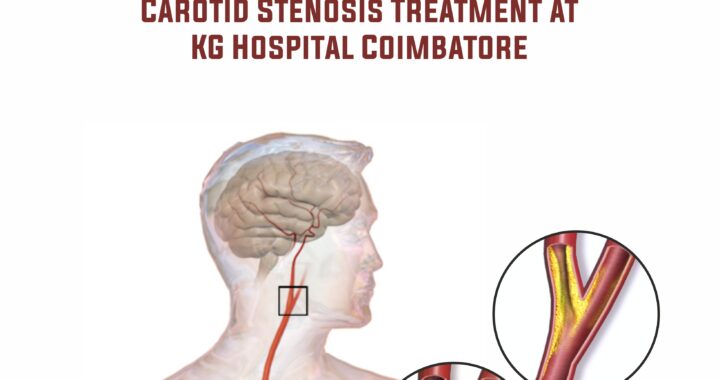Substance-Induced Anxiety Disorder: What Is It?

Anxiety is a common feeling that many people experience at some point in their lives. However, for some individuals, anxiety can become a chronic condition that significantly impacts their daily functioning. Proper treatment of it is needed from the best recovery centres like rehabclinic.org.co.uk. Substance-induced anxiety disorder (SIAD) is a type of anxiety disorder that is caused by the use of drugs or alcohol. In this article, we will explore the definition, causes, symptoms, and treatment options for SIAD.
What is Substance-Induced Anxiety Disorder?
SIAD is a type of anxiety disorder that is caused by the use of drugs or alcohol. It is a subtype of an anxiety disorder that is considered to be a direct result of substance abuse. SIAD can occur during the use of a substance or after the substance has been discontinued.
There are several different types of substances that can cause SIAD, including:
- Alcohol
- Stimulants (such as cocaine or amphetamines)
- Depressants (such as benzodiazepines or opioids)
- Psychedelics (such as LSD or psilocybin)
- Cannabis
It is important to note that SIAD is not the same as a general anxiety disorder that may exist independently of substance use. SIAD is a specific diagnosis that is made when the symptoms of anxiety are directly related to substance abuse.
Causes of Substance-Induced Anxiety Disorder
The exact cause of SIAD is not fully understood. However, it is believed that the use of certain substances can alter the chemical balance in the brain, leading to the development of anxiety symptoms.
Alcohol, for example, is a central nervous system depressant that can lead to feelings of relaxation and calm. However, when consumed in large amounts, it can also lead to feelings of anxiety, panic, and paranoia.
Stimulants, such as cocaine and amphetamines, can also cause anxiety symptoms. These substances cause the release of large amounts of adrenaline, which can lead to feelings of agitation, restlessness, and panic.
Depressants, such as benzodiazepines and opioids, can also cause anxiety symptoms. These substances can lead to feelings of drowsiness, confusion, and disorientation, which can increase feelings of anxiety.
Psychedelics, such as LSD and psilocybin, can also cause anxiety symptoms. These substances can cause hallucinations, delusions, and distorted perceptions, which can lead to feelings of fear and panic.
Cannabis, although it is considered to be a depressant, can also cause anxiety symptoms. The active ingredient in cannabis, THC, can lead to feelings of paranoia and panic, especially when consumed in large amounts.
Symptoms of Substance-Induced Anxiety Disorder
The symptoms of SIAD can vary depending on the substance used and the individual’s overall health status. However, some common symptoms of SIAD include:
- Feelings of nervousness or restlessness
- Rapid heartbeat
- Tremors or shaking
- Sweating
- Difficulty breathing
- Dizziness
- Nausea
- Insomnia
- Irritability
- Panic attacks
- Paranoia
These symptoms can occur while the individual is using the substance or after the substance has been discontinued.
Conclusion
Substance-induced anxiety disorder (SIAD) is a type of anxiety disorder that is caused by the use of drugs or alcohol. It is important to understand the link between substance abuse and anxiety to identify and treat SIAD effectively. Treatment options include medications, behavioural therapy, addiction treatment, cognitive-behavioural therapy, relaxation techniques, exercise, and support groups. With the right treatment, individuals with SIAD can recover and regain control of their lives.
If you need best Guest Postings services then contact us.

 Chaker Cheniti on the Future of Hypnosis: A Handelsblatt Feature
Chaker Cheniti on the Future of Hypnosis: A Handelsblatt Feature  Relieving Neck and Shoulder Pain Through Chiropractic Techniques
Relieving Neck and Shoulder Pain Through Chiropractic Techniques  Carotid stenosis
Carotid stenosis  The Aesthetic and Functional Benefits of Compression Gear
The Aesthetic and Functional Benefits of Compression Gear  Why Is Thermage FLX So Expensive in Singapore
Why Is Thermage FLX So Expensive in Singapore  Why is remedial massage more expensive?
Why is remedial massage more expensive?  Top 10 Best Personal Training Options in Dallas
Top 10 Best Personal Training Options in Dallas  Anxiety & Stress Relief Through RTT: Real-Life Successes and Techniques
Anxiety & Stress Relief Through RTT: Real-Life Successes and Techniques  Boxing Gold Coast: What You Need To Know Before Stepping Into The Ring
Boxing Gold Coast: What You Need To Know Before Stepping Into The Ring